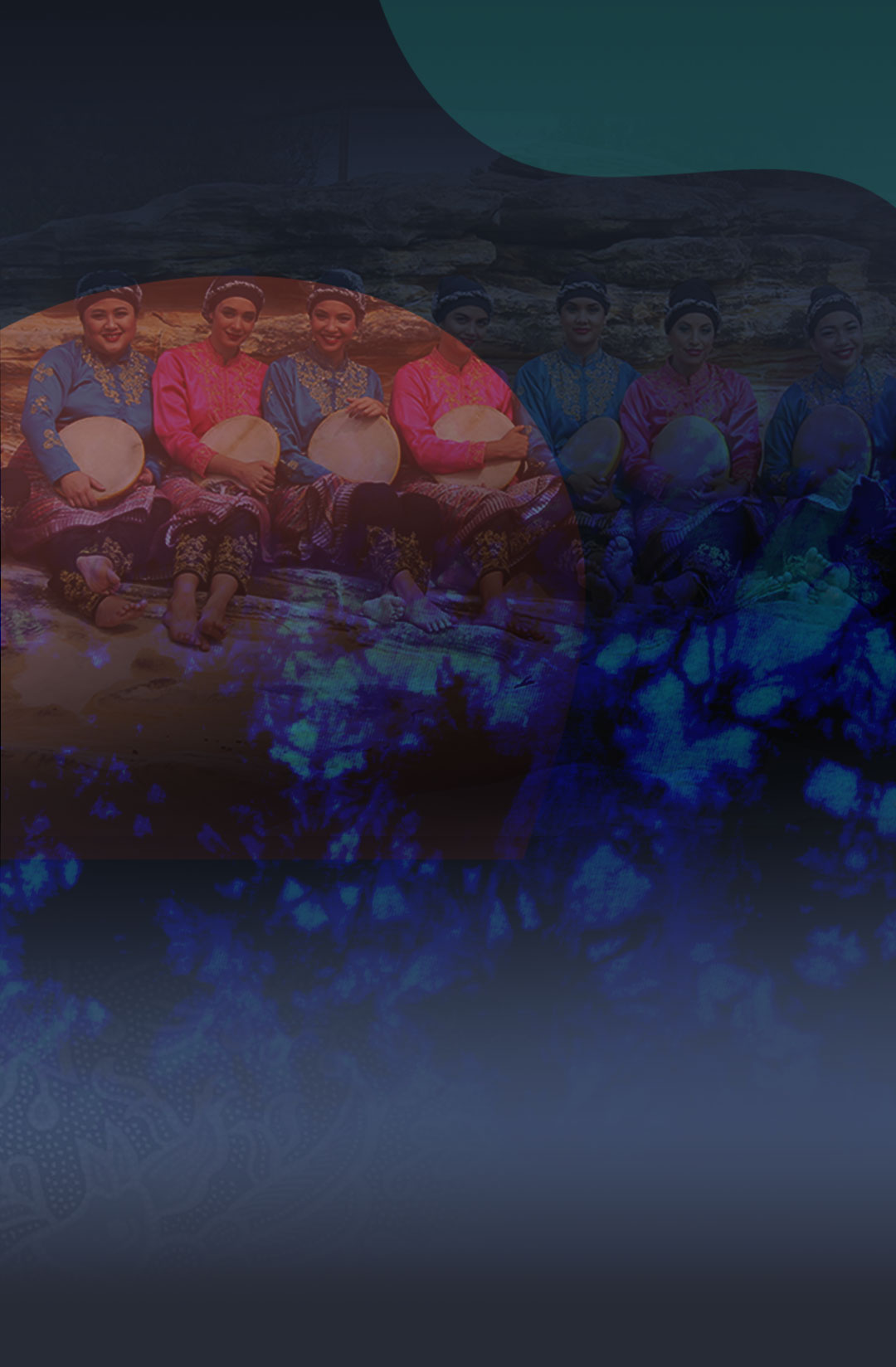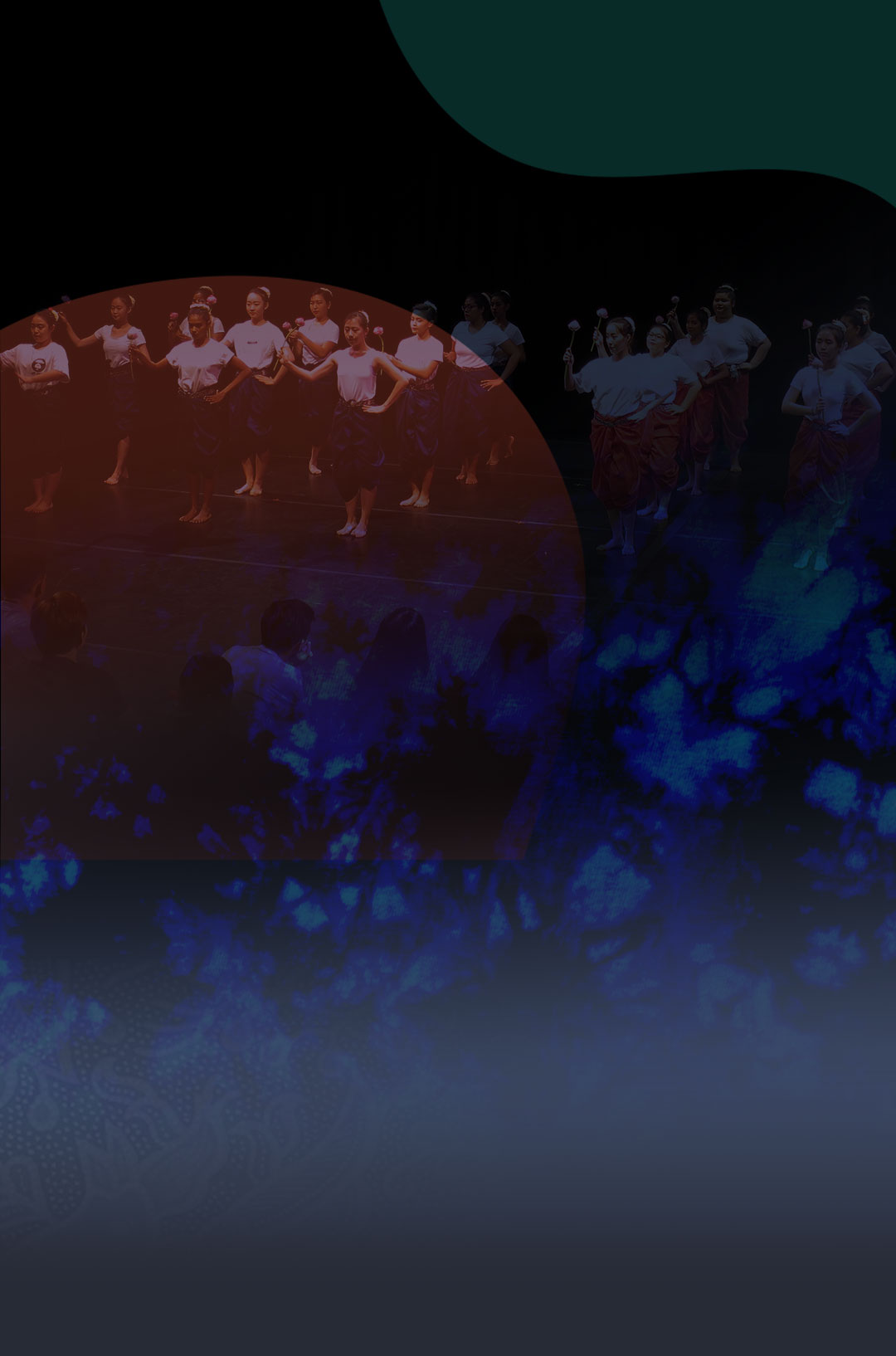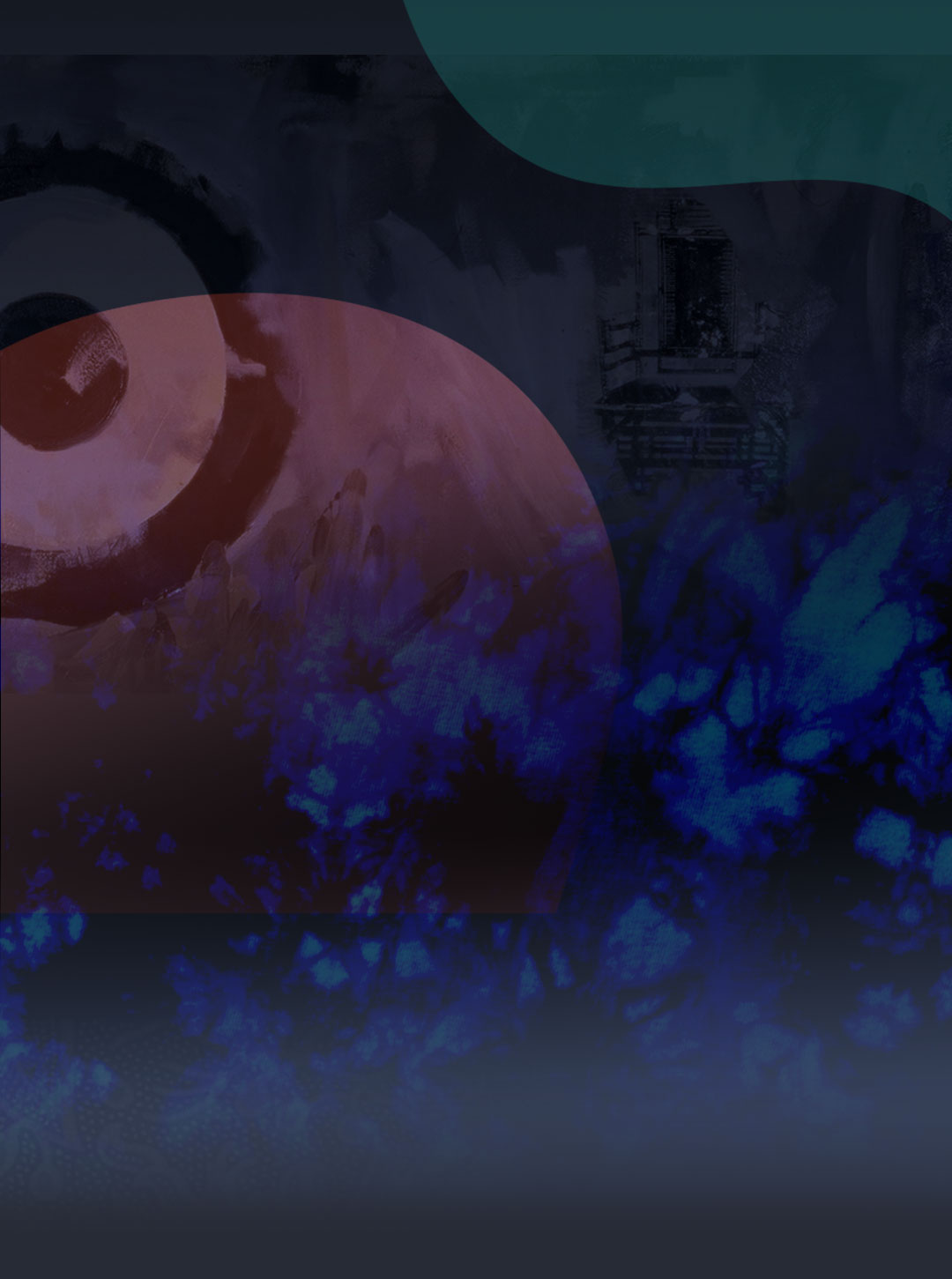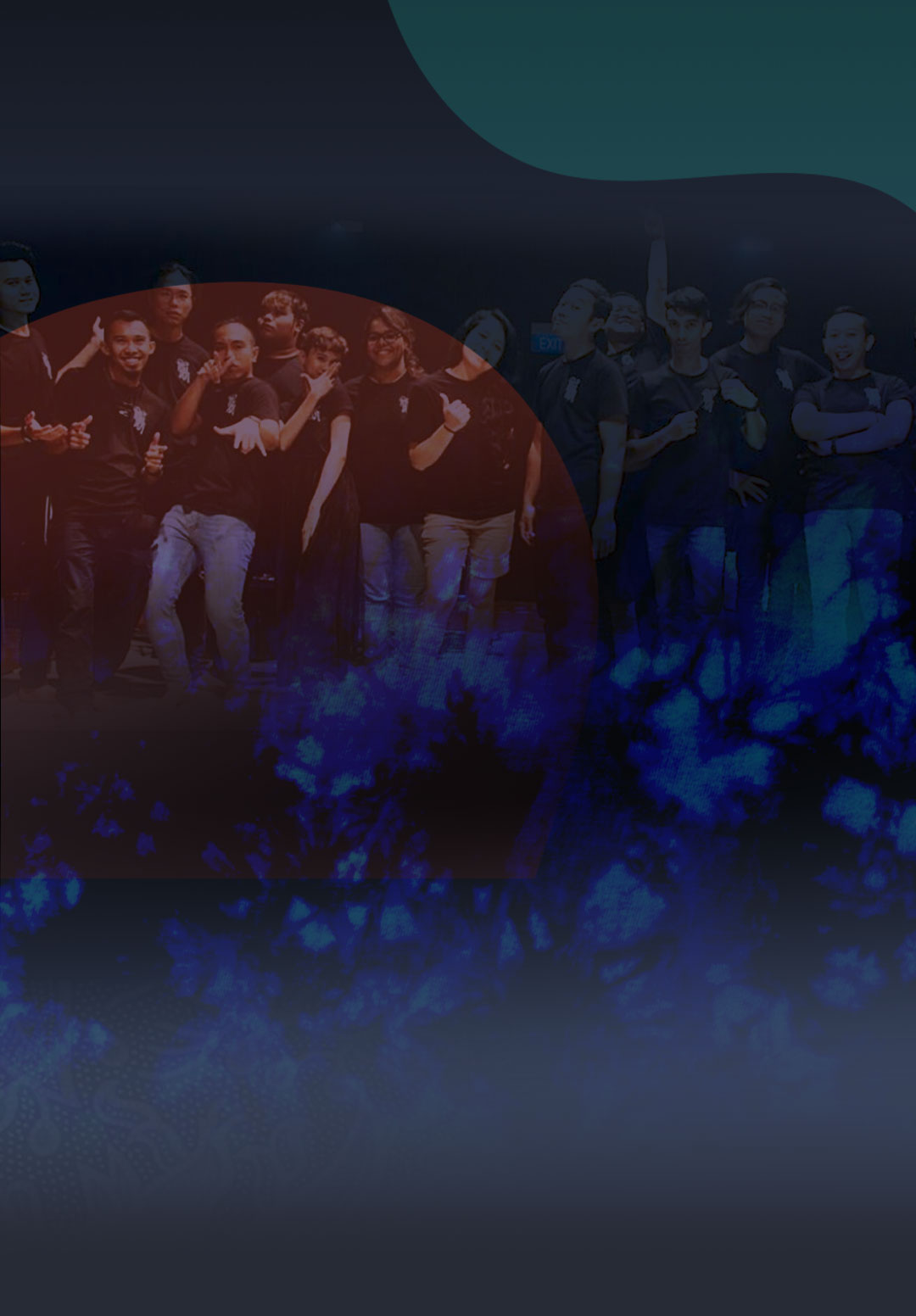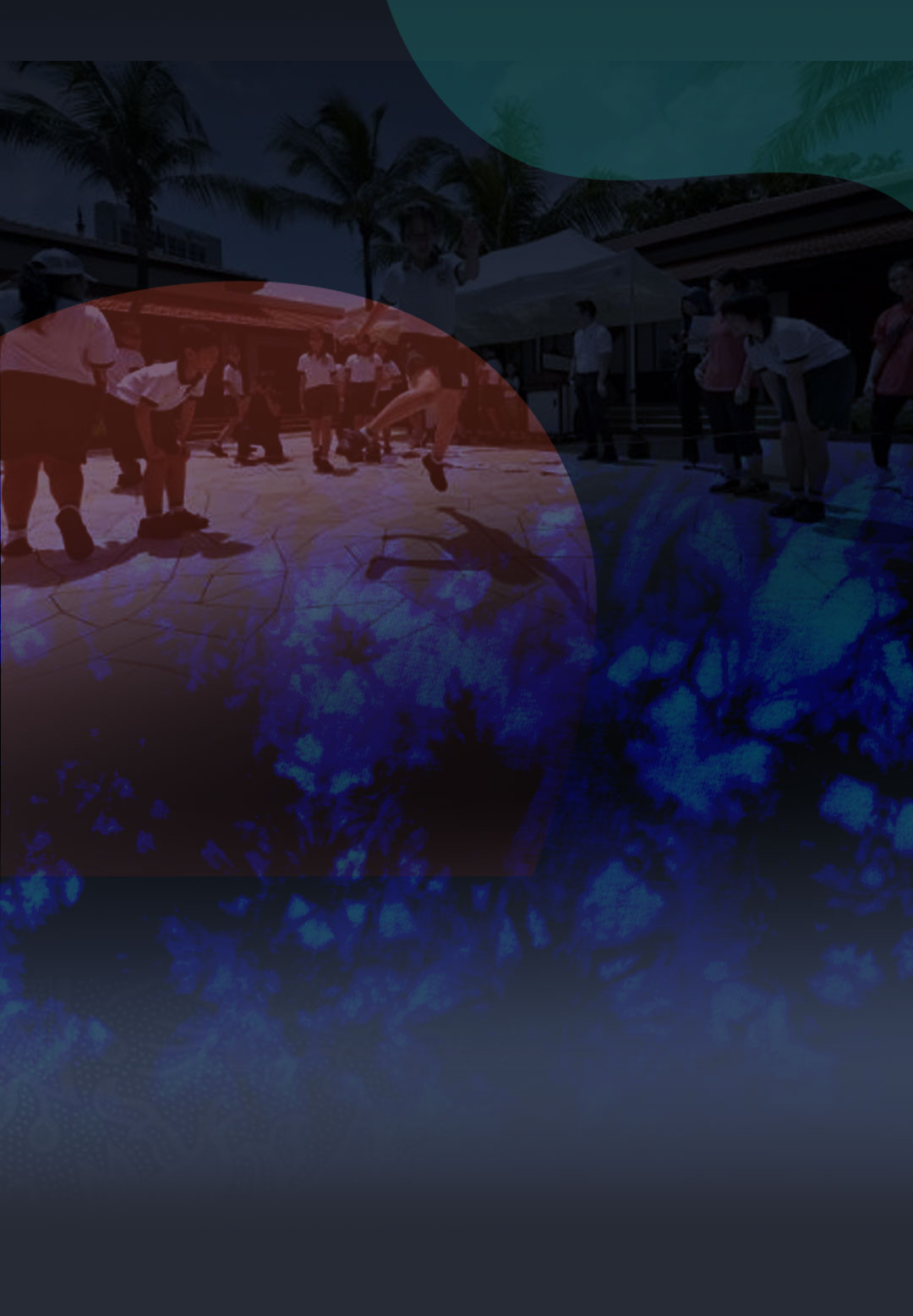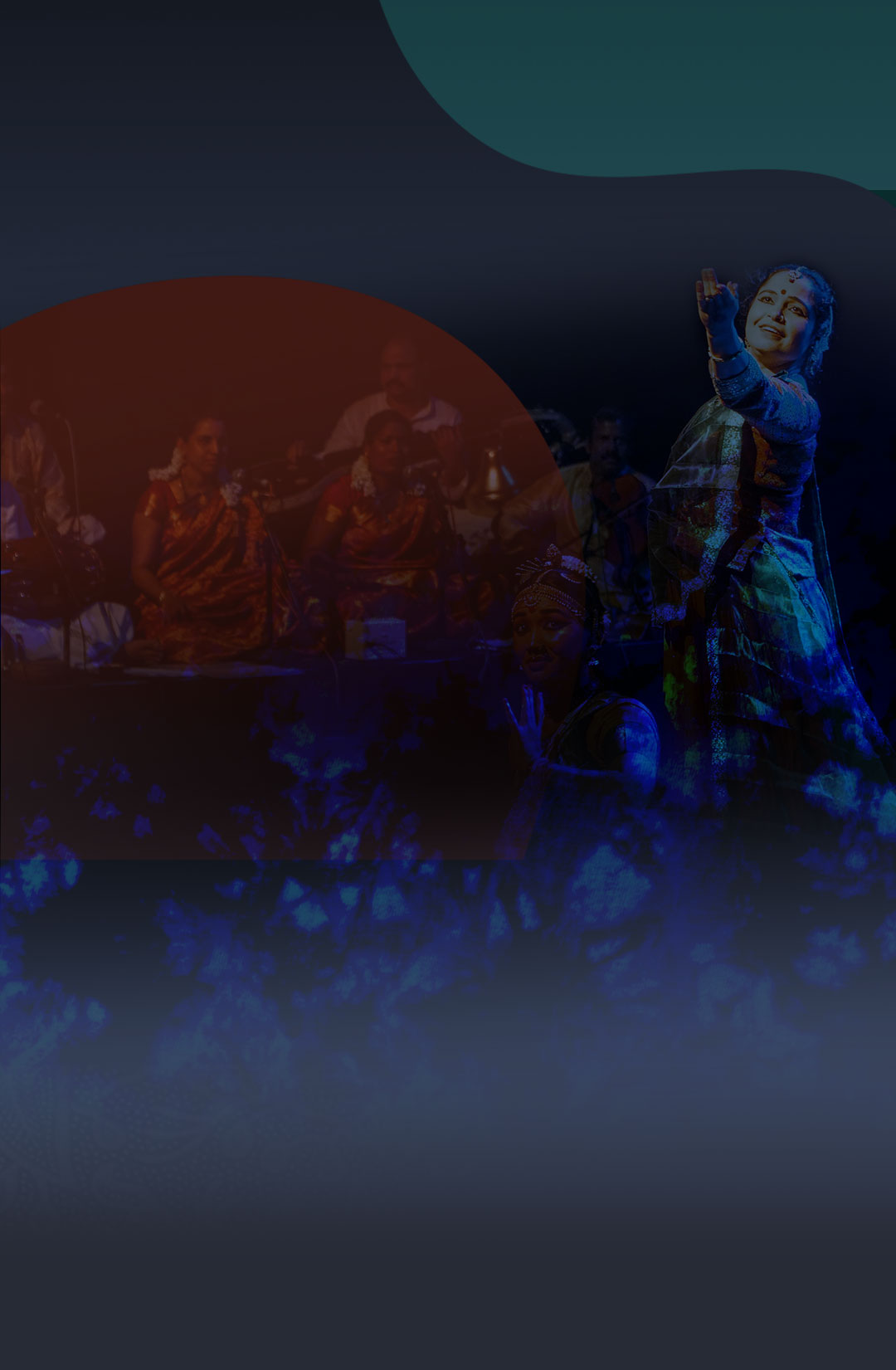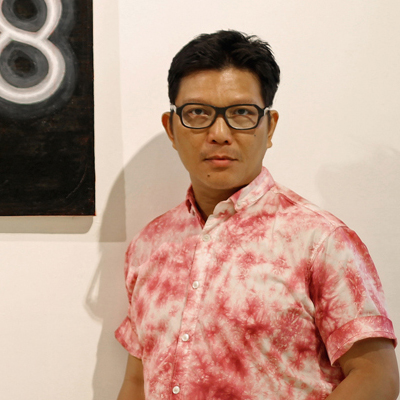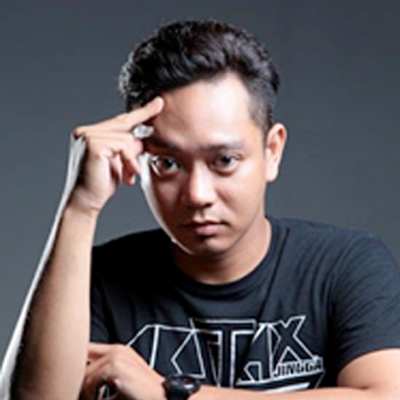Bhaskar's Arts Academy
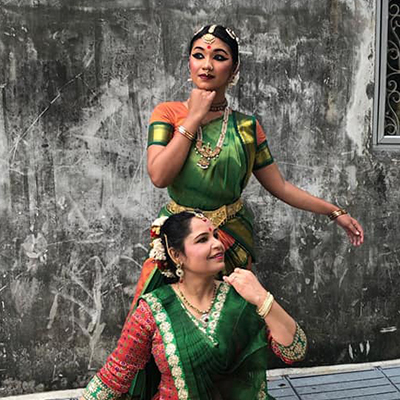
The Rhythm of Bharatanatyam and Kathak: A Juxtaposition of Two Indian Classical Dances
The classical dances of India date back to several thousand years and has evolved in different regions of India through
oral and lived traditions for centuries. With origins tracing back to a synthesis of ancient and medieval literary,
sculptural and musical traditions, Indian classical dances adhere to Natya Shastra, an ancient treatise of dance, drama
and music ascribed in the 2nd century. Widely recognised today for its tapestry of intricate footwork, sophisticated
vocabulary of hand gestures and facial expressions, music and rhythm are two important accompanying limbs of Indian
classical dance that have shied away from the spotlight. An essential element in the dance repertoire, rhythm phrases
or rhythm patterns are often weaved into the dances and recited along percussion accompaniment in the dance sequence.
In this presentation, two dancers will explore the complexity and rhythmic difference between two classical dances,
namely, Bharatanatyam and Kathak, through a dance performance. Bharatanatyam, characterised by its angular movements,
bent legs and low squat, is one of the oldest forms and principal of Indian classical dance originating from the temples
of Tamil Nadu in South India. On the other hand, Kathak, a classical dance form native to North India, is characterised
by its fast pirouettes and ankle bells. An oral recitation of both Bharatanatyam and Kathak rhythm patterns will be
demonstrated during the performance. Audiences are encouraged to recite these rhythm patterns along with the dancers.
Bhaskar's Arts Academy (BAA) is a Singapore-based Indian classical dance, music and theatre company. It steadfastly believes
in contributing to the vibrant arts scene in Singapore and performs three to four seasons annually. With history dating back
to 1952, when the late Mr KP Bhaskar first stepped foot on the shores of Singapore, BAA has come a long way. Now under the
artistic direction of his wife Mrs Santha Bhaskar, BAA humbly prides itself at being at the forefront of the Indian performing
arts scene here. Along with its teaching wing Nrityalaya Aesthetics Society, BAA continues its mission to create, produce,
present and promote traditional Indian classical dance, music and theatre. Its uniquely evolving style is reflective of the
multicultural Singaporean spirit while being rooted in traditional techniques and philosophy.
Cambodian Living Arts

The Language of Cambodian Dance
The presentation by Cambodian Living Arts showcases Cambodia’s most quintessential classical dance that defines her identity – the
Apsara dance tells of the ancient tradition and sacred symbolisms of celestial dancers introduced to the Angkor civilisation
through influence of Hinduism. The gestures and movements of the dancers knit together as a bridge between the spiritual realm
and the mortal world. Believed to be brought to the mortal world as celestial maidens, they charm threats to Kings with their
beauty and enchanting dance movements. Today, Classical dancers continue to display intricate hand and finger gestures that
portray an array of meanings from the life stages of a flower, to depicting emotions like shyness, love and sadness. On the
other hand, folk dance is mostly performed with the intention of being part of celebrations and festivities, portraying urban
interpretations of countryside activities like farming, sacrificial ceremonies, daily lifestyles as well as interpretations of
tribe rituals and ethnic dances.
Cambodian Living Arts was founded in 1998 by genocide survivor and musician Arn Chorn-pond. In the past decade, they focused on
endangered performing art forms and rituals as 90% of Cambodia's artists did not survive the Khmer Rouge regime and Cambodia's
artistic heritage was in danger of being lost forever.
Over the last 20 years, both Cambodia and its arts scene have developed rapidly and Cambodian Living Arts has evolved their work.
They focus on helping talented people to build and develop careers in the arts though scholarships, fellowships, and rendering
support to troupes and individuals.
Aiming to promote creativity and innovation in the arts sector, and to build links with the Greater Mekong region and Asia.
They are also working to instil arts and culture education into Cambodian public schools and increasing performance opportunities
for Cambodian artists.
Fendry Ekel
"The School of Art"
Art is hope. Hope is light. Light is beauty. Beauty is aesthetic. It makes you want to wake up the next day.
Art is a science to see the relation between things. We can train to see and to make those relations visible in an art school.
The wish to do so is based on intense curiosity and one's personal motive. Art school is a forum which functions as a facilitator
of developing analytical and critical view. In the art school, we learn to start any action with the word "Why" instead of "How".
The question "Why" leads us to the creation of reason and value rather than the creation of products and needs. It brings life to
the next level.
In the art school, individual development is central. Art cannot be fabricated. It is the expression of an individual view.
In this expression, aesthetic is the melting of many elements in the right balance. It is a tool to the artist in order to
manifest the artist's individual view of life.
Fendry Ekel was born in Jarkarta, Indonesia. He studied fine art at the Gerrit Rietveld Academy and the esteemed Rijksakademie van
beeldende kunsten in Amsterdam. As an outcome of his solo exhibition at the Hudson Valley Center for Contemporary Art (HVCCA) in New
York in 2010, he was invited to participate in the International Studio and Curatorial Program (ISCP), New York in 2011. Ekel has
been dubbed a 'pictor doctus', who critically investigates in his art the power of figuration and representation by appropriating
iconic images from our collective memory. His multilayered enigmatic monumental paintings after existing photographs explore the
relations between 'man and memory'. In 2004 Fendry Ekel initiated and co-founded OFCA, Office For Contemporary Art in Amsterdam.
In 2013 he initiated Yogyakarta Open Studio (YOS) and Berlin Open Studio (BOS). With OFCA International he developed the art
programmes Re-PLAY and Prima Visione. Fendry Ekel has exhibited his work internationally and had recurring solo shows in Amsterdam,
Jakarta, Milan, Valencia, Mexico City and New York. In 2017, Black Cat Publishing and LM Publishers presented his second monograph
entitled 'Fendry Ekel – Entries', edited by Astrid Honold. Currently, Ekel lives and works in Yogyakarta and Berlin.
Garin Nugroho

Challenges of Indonesian Art Academies in the Post-Reformation Era: On Communities and the Coagulation of Identity
The post-reformation era policy of decentralisation (from 1998), parallel with the establishment of direct elections of the governor to the
regents, led to the socio-economic growth of urban and rural areas in various parts of Indonesia – now consisting of up to 17,000 islands,
415 districts, and 35 provinces. This resulted in a nation-wide artistic development, marked by the growth of artistic communities and the
condensing of local identity – both of which fostered various creative initiatives in rural areas alongside the political growth of
developing creative industries in urban areas.
With these considerations in mind, art academies across Indonesia must be able to adapt to these post-reformation era changes. Art schools
must implement a cultural strategy to highlight the role of artistic communities in rural and urban areas as a prominent library of life and
disseminate these valuable resources. These will therefore bridge the dialogue and become meeting points between the global artistic trends
and the developments of local artistic communities.
Garin was born in Yogjakarta and graduated from the Faculty of Film at Jakarta Institute of Arts and the Faculty of Law at Indonesia
University. Garin is considered a pioneer of a new generation of the ’90s. His films have been shown at various film festivals, such as
Cannes, Venice, Berlin and won numerous awards. As a film critic and documentary maker, his works represent maps and social issues,
culture and politics of Indonesia.
His works also extend beyond films to commercials, music videos, theatre and art installations. Being a writer for publications and
the press. He also established and organised the Jogja Netpac Asian Film Festival (JAFF), LA Indie Movie Short Film Festival, Ruang
Kreatif Performance Art Festival for young Indonesian performers and was a co-director with Rahayu Supanggah for the International
Gamelan Festival in Solo.
Garin is one of the most important Southeast Asian filmmakers of our time, having tackled the complexities of his nation through the
language of film. Over the years, he received multiple awards including the Cultural Ambassador Award of Sultan Yogjakarta, President
Habibie Culture Award, the French Honorary Decoration of Chevalier of the Ordre des Arts et Lettres, the Stella D'atelerie Cavalerie
award, the SGIFF Honorary Award, and the UNESCO Cultural Diversity award. He sat on the jury panel of various film festivals including
the La Biennale di Venezia - Orizzonti, Busan International Film Festival, Tokyo Film Festival, Dubai Film Festival and the Kolkata
International Film Festival.
Capturing the love for his country and the Javanese culture, Garin's films possess an undeniable poetic and reflective quality that
resonates strongly with audiences, gaining critical attention at locally and internationally.
His latest works, "Setan Jawa" (a black and white silent movie with live Gamelan orchestra) and "A woman From Java"
(a 90-min one-shot, one take film) and dramaturgy in Rianto's choreographed work "Medium" have been shown internationally since 2016.
His film "Memories of My Body" premiered at the 75th Venice International Film Festival and won several awards including Best Film at
the Festival des 3 Continents, Nantes, and the Asia Pacific Screen Awards.
He is currently preparing for his new theatrical performance project with The Esplanade, Singapore and The Arts Center, Melbourne.
He is also actively teaching the postgraduate programme at the Indonesian Art Institute (ISI) in Solo and Jogjakarta.
Goh Toh Chai
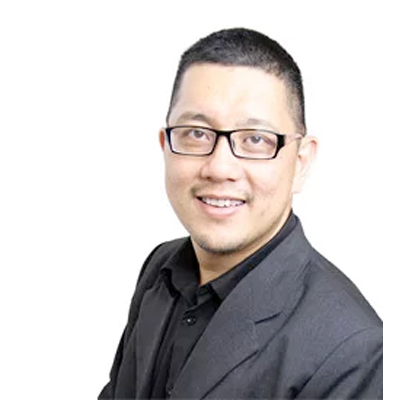
Irama Belia: Rekindling Traditional Musical Rudiments through Choral Singing
The lecture is based on the SG50 celebration (2015) commissioned piece, Irama Belia, an unaccompanied work for mixed choir.
This work was commissioned by Nelson Kwei and premiered by the Vocal Consort, SYC Ensemble Singers and The One Chamber Choir
at Victoria Concert Hall, Singapore.
Irama Belia showcases traditional Chinese, Malay and Indian musical elements. The Chinese musical elements include
Luo Gu Jing 锣鼓经 �(vocal recitation of the onomatopoeic sounds of Chinese percussion ensemble) and Gong Chi Pu 工尺谱
(cipher notation attribute to Chinese Opera sung in Kun Ju 昆剧 and Yue Ju 粤剧). The traditional Malay influences are the
use of Pantun and interlocking rhythmic devices commonly found in Rebana, and Kompang performances. The song also explores
the Carnatic or Southern Indian music scale Raga, and its rhythmic counterpart, Tala.
The speaker will analyse and highlight the underlying pedagogical concepts and values of the traditional rudiments of music.
Through demonstrations and hands-on participation from the audience, the speaker aims at creating awareness of the confluence
and influence of musical experience unique to Singapore, and Southeast Asia.
As Head of Composition at the Nanyang Academy of Fine Arts, a composer of music ranging from choir, symphonic band, wind ensemble,
chamber music to large scale orchestral works, Zechariah Goh Toh Chai has carefully fused Southeast Asian-Chinese with Western
traditions. He worked on his Doctorate degree majoring in Composition under the guidance of Dr. Charles Hoag at The University
of Kansas USA. Since the 1990s, Zechariah’s choral works has won many international competitions. Zechariah has been commissioned
by SYC Ensemble Singers, Singapore Symphony Orchestra, Singapore National Youth Orchestra, The Philharmonic Orchestra, Nanyang
Academy of Fine Arts Orchestra, The Philharmonic Wind Ensemble, National Arts Council Singapore, and etc. Zechariah Goh is also
an active speaker at international music conferences such as the WASBE, ISME, APSME, and etc.
Grace Leong
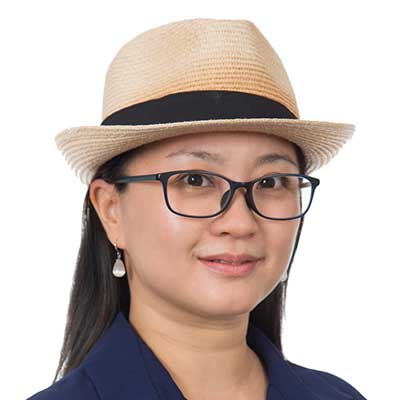
Title: Building Intrinsic Motivation through Compassion,
Collaboration and Contribution: The Role of Interdisciplinary Project (Puppetry) in the Arts Education
The influx of information has impacted humanity in a way that I can only capture in a metaphor of surfing in the sea.
People are constantly tossed by the waves, either you rise above the waves by mastering a surfing technique or be drowned
by it. People become much volatile as the waves constantly push and pull them to destinations, where the state of transiting
seems perpetual. There is no anchoring point where you could come back to. In the sea of information, people are floating
and not knowing where the next wave would bring forth. The surfing board is like a high-tech system and knowledge where
there is uneven gap in the development of this system in different parts of the world. The sense of belonging may be
affected due to the loss of ‘rootedness’ in heritage, and identity may become blurred.
How do I build an anchoring point for my students in Singapore where Western influence is highly impacted and proliferated
in the society? We are globalised and advanced in economy and technology fields, will this lead to the loss of identity or
localness? What does being in Singapore mean? This Interdisciplinary Project (IDP) sprung from the desire to understand who
we are and why are we practising arts in this part of the world. How do we partner with the arts to build a learning ecosystem
that would build intrinsic motivation to the millennial generation in Singapore.
A multi-disciplinary artist and scholar, Grace Leong was trained as a dancer and later in contemporary performance practices.
A post-colonial Chinese Malaysian who lives in Singapore, she is fascinated by issues of identity and multi-cultural art practices.
Her key projects focus on Southeast Asian themes, which include "Spirit of Kelantan", a documentary launched on MediaCorp's OKTO
Channel in 2011 as well as "Ramayana in its Forms", "Transcend Sbek Thom" and "Encounter Hun Lakorn Lek", which were public
performances which investigates collective memory and embodiment of the arts of traditional theatre.
Grace's work "Allegory of Wayang Kulit" (2014) was featured in the University of Royal Holloway Festival of New Works in London,
where it was included in the list of "Creative Responses to Modernity Competition", hosted by the Centre for Modern Literature
and Culture at King's College. It was also commended by judges Lisa Appignanesi, Alison Duthie, Juliet Gardiner, Jeremy Harding,
Michael Holroyd, Stephen Romer and Fiona Shaw, as a work which demonstrated 'confidence in handling uncertainty and for taking
the themes of modernism somewhere refreshingly new'. Her most recent works include "MacBeth in Nanyang Spirit" and "Duo Duo 3",
where the former was awarded a Special Prize by The Shakespeare Association of Mongolia, and the latter a sold-out performance
in Georgetown Festival 2017.
Grace has a wealth of professional experience through her works and collaborations with esteemed performing arts companies as
well as museums in the region. Notable collaborators include Noise Performance House, National Museum Singapore, Dance Horizon
Troupe, Paper Monkey Theatre, MOCA Museum of Contemporary Arts Singapore, TCR Music Station Singapore, Singapore Hokkien Huay
Kuan Dance Theatre and People's Association Talent Advisor Panel.
Hanafi
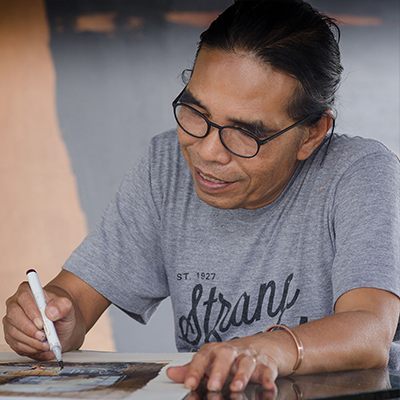
Collaboration as Means to Discover the "Language" of Interdisciplinary Arts
The dissemination of cultural discourse along with creative developments that comes with it are no longer delineated by the barrier between
academic and non-academic backgrounds. In the realm of artistic creation, both lanes feed off and grow with each other through an endless
stream of dialogue. This dialogue is what makes collaborations possible.
I've grown as an artist through the spirit of collaboration. Ever since the late 1990s, I've been unable to distance myself from collaborative
work, from one with the prominent Toronto-based collective "A Cross Ocean" in 1999 up until my recent collaboration with renowned Indonesian
literary figure Goenawan Mohamad (GM) in 2018.
A myriad of collaborative experiences with choreographers, architects, dancers, writers, graphic designers, etc convinces me that the
future of productivity in arts lies in interdisciplinary collaborations. At the moment, artistic ideas are growing exponentially and
unpredictably. The practice of collaboration materialises the "language" that ties it all together.
Hanafi (b.1960) studied painting at the Indonesian School of Fine Arts (now the Indonesia Institute of the Arts) in Yogyakarta. Moving to
Jakarta in the 1990s, where he currently lives and works, Hanafi soon gained a reputation for his luminous, abstract paintings which subtly
convey the sense of an interior, meditative world.
From his art producing space on the lips of Pesanggrahan River, West Java, Indonesia, the questions Hanafi had in mind were "from where
and to where were we going?" Hanafi answered the question by establishing Studio Hanafi in 1999 – a not-for-profit organisation and art
space to develop a research-based social mechanism rooted in aesthetic values. Its vision is to fulfil the public needs through artistic
initiatives.
Ivan Lam
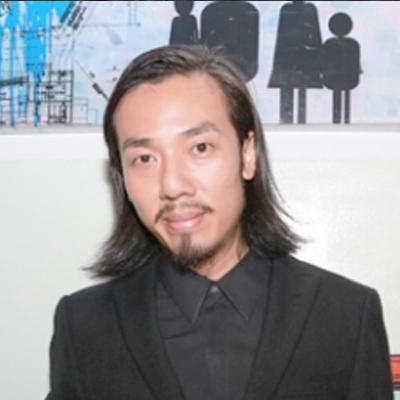
Stuck in the Past Thinking it is the Present and Not Seeing the Future
This presentation discusses how Malaysian tertiary art education came to be and where it is heading towards
in the future. It details the point at which Malaysian tertiary art education can be found; why it does not
bridge the contemporary art industry; what can be done to salvage this and where this is all heading. It also
introduces how primary and secondary art education was formulated in accordance with the policies of the Malaysian
education ministry. There is discord among all levels of primary, secondary and tertiary art education – the selective
usage of techniques versus critical thinking being taught at school and the vacuum that has been created as a result of
these choices has impacted contemporary art practices in Malaysia. Ultimately, the future of Malaysian tertiary art
education depends very much on what we can do about it now. The question of what can be done to move this forward
so that it will not be stuck in the past thinking it is in the present and forsake the future will be the main
theme of the presentation.
Ivan Lam has established a name for himself as one of the most progressive contemporary artists in Malaysia. His commitment and
unrelenting pursuit of his artistic journey have seen his works span a variety of media and ideas which are inspired by popular
culture, autobiography, current affairs and everyday vistas.
Joost Christiaan Flach
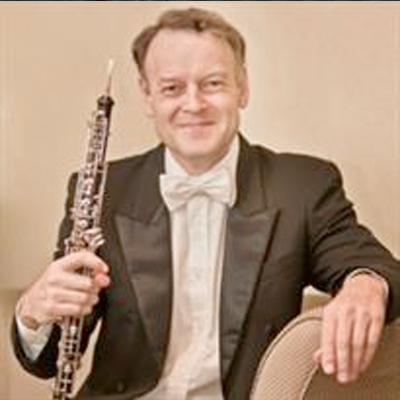
The Current Trends of Traditional Wind Music in Southeast Asia: 3 Case Studies
The wind ensemble music in Southeast Asia often features music elements from regional traditional folksongs and
dance forms. This lecture recital aims to highlight pedagogical values of the Southeast Asian wind music.
The discussion will focus on teaching and learning experience of the Southeast Asian wind ensemble works with local
music students in the tertiary level. In addition, the speaker will provide an overview of the recent development in
the genre, particularly, the influence from the western composition techniques in areas such as harmonic language,
motivic fragmentation and interpolation applied within the form and structure, as well as implication of the instrumentation
used in the ensemble. The lecture will be supported by live demonstration of musical examples by a wind ensemble. The speaker
will cite musical examples from three local works for wind ensemble – Joget Pahang by Isaac Chia T. H. (Malaysian composer),
Alusia by Singgih Sanjaya (Indonesian composer) and Bua Khaw by Bernard Sunmer (British composer based in Thailand).
Joost Christiaan Flach is currently working as Head of Winds Studies at the School of Music at Nanyang Academy of Fine Arts (NAFA)
in Singapore. Prior to this, he has worked as a contracted professional oboist at the Singapore Symphony Orchestra, Bangkok Symphony
Orchestra, Kuala Lumpur Symphony Orchestra and Malaysian Philharmonic Orchestra. In the years in between his tenure as an orchestral
player, he was a project officer for the Ministry of Education in Singapore and also a visiting lecturer at the Institut Seni
Indonesia in Yogyakarta for the Dutch government. As an ardent supporter of local music education, especially that of woodwinds,
he founded three classical wind ensembles in virtually all countries he worked in: Ansambel Tiup in Indonesia, Sling Wind Ensemble
in Singapore and High Winds in Malaysia, all with which performed in Singapore, Norway, Malaysia, Indonesia and China.
Muhammad Norisham
Bin Osman
New Creation or Contemporary: Dance Creation Approaches Based on Traditional Malay Dance
This performance lecture considers different approaches to dance creation based on traditional Malay dance. One approach,
referred to as 'new creation', seeks to contemporise Malay dance while adhering to Malay dance conventions. Another approach,
referred to as 'contemporary', incorporates contemporary movement vocabulary/language as well as contemporary choreographic
structures and devices, often producing abstract or ambiguous dance compositions. Both approaches promote dance creation
through the understanding of and sensitivity to Malay cultural values and practices.
Muhammad Norisham Bin Osman is a NAFA Diploma in Arts Management and Bachelor of Arts (Hons) Creative Industry Management graduate.
He is the Founder and Artistic Director of Kaizen M.D., a performing arts collective that gathers young artists from various art
disciplines to create multidisciplinary works. His involvement in Singapore's arts industry as an accomplished actor, choreographer,
teacher and production team member has led to notable achievements such as the Goh Chok Tong Youth Promise Award (Merit) in 2015
and a nomination for Best Supporting Actor at the M1-The Straits Times Life Theatre Awards 2016.
Nanthana Boonla-Or
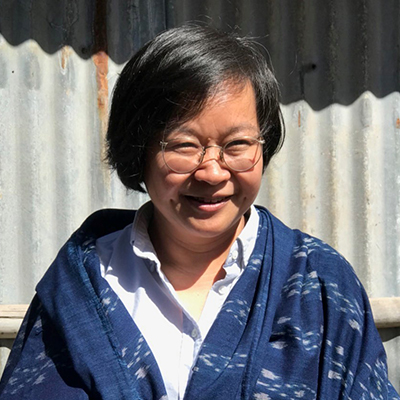
The Arts of Body Adornment of Pga K'nyau Ethnic Group in Rachburi, Thailand
Several ethnic groups from Myanmar migrate to Thailand due to causes such as political hardship and domestic battles since 1925.
One of them is Pga K'nyau, or 'Karen' who settled in several areas along the western border line of Thailand from north to south.
Nowadays, Pga K'nyau people still travel back and forth illegally between Thailand and Myanmar mainly to sustain their jobs and to
have a better quality of life in Thailand, while keeping the connection with their families in Myanmar. These cross-borderers appear
to preserve, apply and transform their art and cultural heritages in the pursuit of the own existence. While their traditional body
adornment, the garments which are made from woven textiles with embroidery and the silver jewellery are the artistic proofs of rich
narratives about their culture and personal worldview, the modernised version of these items reflect how they struggle and strive to
cope with the current living context.
Today, with less popularity among the young Pga K'nyau members, the traditional costumes need to find the ways to survive by blending
into the wearers' contemporary lifestyles. The artistic identity of traditional costumes and its crafted fabrication are hence studied
in relation to transitional living context in order for us to create the design intervention that aims to encourage locals to think
about their own cultural presence. This project intends to express their ideas on how this traditional wearable arts can withstand
their cultural identity loss.
Nanthana Boonla-Or studied Industrial Design at Chulalongkorn University, Thailand and Textiles at Goldsmiths, University of London
for her BA and MA respectively. She has been teaching at Industrial Design Program, School of Architecture and Design, King Mongkut's
University of Technology Thonburi (KMUTT), Thailand since 2000. Her expertise is in the field of socio-cultural qualitative research
for design, textiles, crafts product design and community design. Her research experience has been contributed to a range of service
design for public sectors, product development and strategic design projects: consumer products, branding strategy for community product,
crafts product design, as well as personal textiles arts projects.
Woranooch Chuenrudeemol received her Bachelor of Architecture in Industrial Design from King Mongkut's Institute of Technology Ladkrabang
in Bangkok, Thailand and completed her Masters of Interior Design from Rochester Institute of Technology, USA. She is currently a professor
of the product design department at KMUTT. Her expertise includes research in socio-cultural factors in design and product and branding
development.
Teerapoj Teeropas is a designer based in Bangkok, Thailand. He graduated from Industrial Design Faculty, School of Architecture and Design,
King Mongkut’s University of Technology Thonburi (KMUTT). Now designing handicraft furniture and home decorative for several Thai brands and
producing his own work under Teerapoj Teeropas. He is also a co-founder of Issaraphap design studio (designer cooperation brand) and Lecturer
in Industrial Design Program at KMUTT.
Ng Soon Kiat
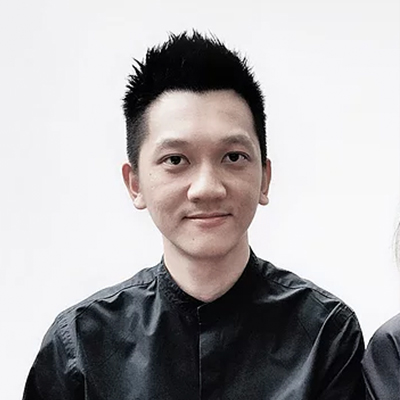
Rubber – Band
Synonymous in Asian context, a rubber band (also known as an elastic band) often evoke forms of nostalgia surrounding childhood games, aside
from its utilitarian function to tie objects together. These memories inevitably form contextual frameworks within the continuous search of
personal identification in life.
Allegorising a rubber band in conjunction with the novelty of reviving craft in modernity, how do we as design practitioners and educators
identify the tipping point before it snaps into lost traditions as progress stretches gradually? How can we utilize traditions to correlate
within pedagogy in creating a holistic outcome towards a contemporary identification of oneself?
Paralleling with academia, our thinking about life and culture will inevitably flow in a way which draws upon and is shaped and determined
by people through teaching and traditions experienced at school. The discourse seeks to explore new typologies in educating both art and
design programmes by redefining, re-evaluating and repositioning possibilities between the new and the old.
Alongside this presentation is the exhibition .
Kiat is a multidisciplinary designer who works across disciplines in furniture, spaces and graphic communication. Prior to his teaching role
at NAFA, he co-founded his practice DAZINGFEELSGOOD and had also garnered a wide spectrum of industry experience in aspects of design for
residential, commercial, exhibition and hospitality projects since 2009.
This presentation is co-presented by students Nurul Amilia Binte Roshamil (Fine Art Progrmme), Lee Yan Wen (Design & Media Programme) and Lua Boon Kai
(3D Design Programme).
Oniatta Effendi
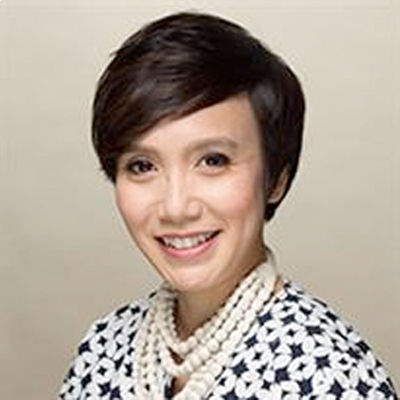
Juggling Jogja: A Modern Educator's Exploits in Nurturing Awe and Wonder
In June 2019, a group of 29 Theatre students from NAFA, led by Senior Lecturer Oniatta Effendi, will be headed to Institut Seni
Indonesia Yogyakarta for 3 weeks as part of the department's inaugural Overseas Immersion Programme. The immersive experience hopes
to instil a sense of awe, wonder and appreciation for the different aspects of traditional performing arts in Indonesia. Juggling
Jogja investigates the position of awe in arts education. It challenges the way we integrate awe and wonder in the arts classroom.
This presentation will capture snippets of the work done by the students during the immersion, with students themselves sharing a
learner's perspective of what awe and wonder does to and for them during the immersion. Following this, a discussion entails with
the aim of encouraging participants to reflect on their own roles as modern educators, and how we can continue to instill curiosity
and implement awe through cognitive reframing, alongside question the importance of awe and wonderment.
Oniatta is an educator with over 20 years of experience in the classroom. A strong advocate of the Arts and an active applied drama
practitioner, she believes in the transformative nature of drama, especially with vulnerable communities. She has worked with ex-offenders
with addiction issues in a halfway house, youth offenders in juvenile rehabilitative spaces, welfare homes as well as youths with special
needs. Oniatta leads a group of 30 Theatre students this year in the department’s inaugural Overseas Immersion programme to Indonesia and
is excited by the opportunity to re-educate herself in seeing the arts beyond utility.
Sebastian Mary Tay
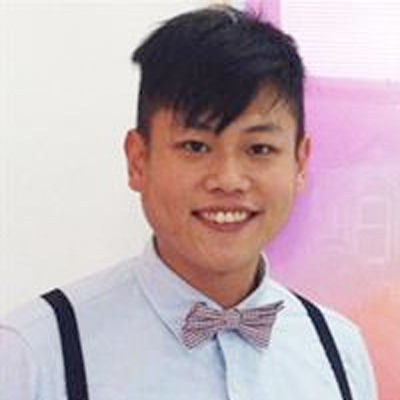
Emptiness as a Universal Object in Contemporary Works of Art
This presentation is titled 'Into Deep Silence'; it responds to the sub-theme of 'Art as Universal Currency or Cross-Cultural Language',
diving into the theoretical and practical components of contemporary art practices through the specific framework of 'emptiness' as
universal sensibility. The presentation will, thence, consist two parts: a verbal presentation and a practical presentation of an
installation. The former serves as an introduction into the theoretical premises of the latter, inquiring the conceptuality of
'emptiness' in a highly globalised, late capital, postmodern world, emphasising the universality of existential nothingness as a
critical catalyst in thinking and making. Drawing inspiration from writers and literature from various cultural background of different
eras, the presentation strives for an intercultural significance through a comparative framework, highlighting the relevancy of said
topic within Southeast Asia and beyond, thus accentuating a similar focus upon the global of our contemporary age. The practical
component of this presentation includes an installation of a landscape structure made from sawdust and flour. This time-based
installation sees the viewers within the enclosed room and commences with fog projected to fill up the space. The conceptual grounding
of this work appropriately extends the topic of 'emptiness' as read theoretically, into the practical, experiential significance of
art making.
Sebastian Mary Tay is an interdisciplinary artist and academic. Some recent exhibitions include 'NIDA International Photography Symposium'
and 'The 121st Society of Scottish Artists Annual Exhibition'. He has delivered lectures and talks at City of Glasgow College, University
of the West of Scotland, and The Royal Scottish Academy.
Sherman Ong
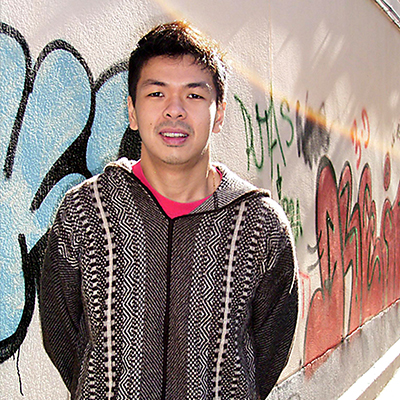
The Migrant Experience Into the Nusantara as a Source for Art Making.
Through an examination of my current artistic practice, the presentation will explore a creative process that is fueled by the
migratory and pluralistic nature of societies in Singapore and Malaysia.
As a child, I grew up frequently listening to stories from my elders – the drama, the gossips, the grouses and discrimination,
the rituals and superstitions, the familial infidelities and sacrifices, the animistic and the shamanistic beliefs, as well as
the daily epics – all of which are deeply rooted in the Peranakan culture. Hybrid and diverse in nature, these micro-narratives
are strongly entwined with the main values that are essential to my upbringing.
With my body of work as a point of departure, I hope to uncover the formation of hybrid identities within a larger network of
cross-cultural experiences, as well examine how their collective existence and histories become an insightful stimulus for
creative production.
As an artist, these personal narratives are like blueprints materialising in my head, eventually guiding each scene which are
crucial to my portrayal of the Nusantara region; through the medium of film. The resulting artwork weaves the notions of origin,
diaspora and migration with personal and intimate accounts from descendants of migrants from varying time period in history and
localities.
The main presentation will be verbal in nature, accompanied by slide presentations of images and video clips from
my personal family's archive.
Sherman Ong is a filmmaker, photographer and visual artist. His practice has always centred on the human condition and our
relationships with others within the larger milieu.
Winner of the Prudential Eye Awards 2015 for Photography and the ICON de Martell Cordon Bleu Photography Award 2010, Sherman has
premiered works in Art Biennales, Film Festivals and Museums around the world, including the Venice, Singapore, Yinchuan, Jakarta,
Fukuoka, APT and Bangkok Art Biennales.
He was part of the Singapore Pavilion supporting artist Ming Wong at the Venice Biennale 2009, which garnered a Special Mention;
nominated for the APB-Singapore Art Museum Signature Art Prize for 2011, and the Top 30 Finalists of the Sovereign Asian Art Award 2016.
He collaborated on the Little Sun by Olafur Eliasson which premiered at the Tate Modern London in 2012. Currently, he is part of
SUNSHOWER: Contemporary Art from Southeast Asia (1980s to Now) co-organised by the National Art Center, Tokyo and the Mori Art Museum.
His works are in the collections of the Fukuoka Asian Art Museum, Singapore Art Museum, Peranakan Museum and the Seoul Art Centre.
Suara Indonesia Dance
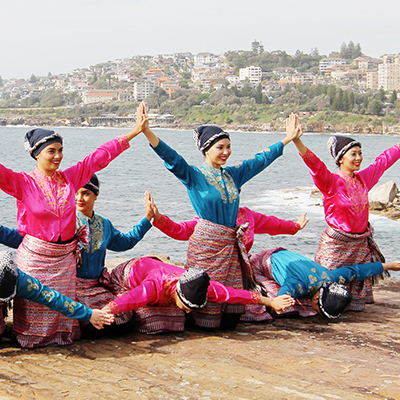
Changes and Developments in Acehnese Sitting Dance Forms
Acehnese sitting dances, encompassing synchronised movement, melodic songs and body percussion, have been transmitted into the cities
through Indonesia’s recent history. This has resulted in their widespread usage and popularity, centred in the capital city of Indonesia,
Jakarta. As they have moved from the countryside to the urban environment, and from the periphery to the centre, they have demonstrated
both continuity and change. Issues surrounding the practice and performance of Acehnese sitting dances include how a traditional art
form has responded to Aceh’s 30-year conflict and tsunami disaster, and how it has reacted to the pressures of globalisation and the
market economy. Two forms of women’s sitting dances will be discussed and demonstrated by Sanggar BUANA, Banda Aceh. They will perform
in a traditional style, Rateb Meuseukat, and a new choreography style that has emerged from Acehnese artists residing in Jakarta, given
the name Ratoh Jaroe.
Suara Indonesia Dance was established in 2001. Today, the group presents an energetic mix of dance, body percussion and song unparalleled by any
other performance group in Australia. With a blend of traditional and contemporary influences from their Indonesian heritage and Australian
upbringing, Suara Indonesia Dance brings liveliness, originality and all-engaging performances to the stage every time.
Murtala is a dance practitioner and scholar from Banda Aceh who has trained extensively with traditional teachers from a young age.
Murtala continued his dance training at the Institute of the Arts in Padang-Panjang West Sumatra, returning to Aceh after the 2004
tsunami. He built a local NGO with fellow dance artists in Banda Aceh to teach traditional Acehnese dance and music to children
affected by the tsunami and conflict. Murtala is in the process of completing his Masters at the Institute of the Arts Surakarta.
In Australia, Murtala is the Choreographer and Co-Director for Suara Indonesia Dance — a Sydney-based Indonesian dance company
specialising in Acehnese body percussion. Together with Artistic Director Alfira O’Sullivan, their expertise in teaching and
performing these dances has led them to tour extensively around Australia, Europe and Indonesia.
Sanggar BUANA Banda Aceh is a traditional and contemporary dance company based in Banda Aceh. Founded by Khairul Anwar in the year 1999,
it has become a force for the dissemination of traditional Acehnese culture.
Suenne Megan Tan
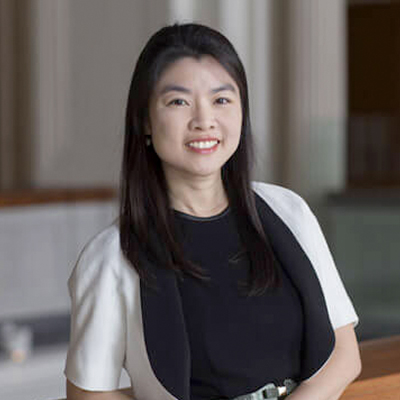
Suenne Megan Tan is Director of Audience Development and Engagement at National Gallery Singapore where she works across the Gallery
to ensure that the Gallery’s programming is relevant, accessible, and meaningful to different audiences, supporting the Gallery’s vision
of fostering and inspiring a thoughtful, creative and inclusive society.
Suenne leads a cross-disciplinary team collaborating with artists and other creative professionals to develop and pilot new
exhibition-making formats with site specific exhibits and programmes, aimed at enhancing the connection to art for different audiences with
different learning preferences, based on the belief, as a museum, in the power of art to open minds to envision new possibilities.
One of her key areas of focus is to ensure that the Gallery continues to provide a stimulating public space in which people can come
together and be inspired through art.
Suenne conceptualised and launched National Gallery Singapore’s Keppel Centre for Art Education (KCAE), which provides a creative
environment that introduces children to art at an early age while acknowledging the importance of lifelong learning. KCAE was given the
2018 Children in Museums Award organised by the European Museum Academy and Hands On! International Association of Children in Museums,
and acknowledged as an excellent example of a dynamic 21st century education centre within an art gallery.
She is also Festival Director to three of the Gallery’s signature programmes: Children’s Festival: Small Big Dreamers, Children’s Biennale
and the Light to Night Festival, one of the marquee events of Singapore Art Week and a highlight in the Singapore cultural calendar.
Yu Wei Jie and Zhang Jing

The Practice of the "Extra-daily"1 "Presence"2 of the Unified Vocal and Physical
Expression of Singapore's Chinese-language Spoken-drama as Part of the Artistic Gesture of Southeast Asia:
Performance on Stage and Training in Studio
As a part of the modern Southeast Asian performing arts gesture, Singapore's Chinese-language spoken-drama, though with only a
short span of the limited development out of its own soil since after the beginning of the last century, is now a deeply-rooted
and far-reaching dramatic form increasingly accessed by the contemporary audience and popularly practiced by and among the educated
youth in Singapore. The unique stage gesture in terms of the organic unified vocal and physical "extra-daily behaviour" and
"presence" of this distinctive stage product has not only become itself an indispensable component of the Singapore theatre landscape,
but also, compared to the recent emergence of this young theatrical form in the other SEA countries, has been developed into a
benchmarked practice of its own ever enriching the growth of the contemporary theatrical arts of the region considerably.
However, what is the artistic feature and aesthetic significance of the organic unified vocal and physical "extra-daily techniques"
and "presence" of the Singapore's Chinese-language spoken-drama? How and in which way has it appeared distinctively other than the
stage presentational style of the English-language drama, both locally and globally? What and to which extend has it inherited from
the rich linguistic, vocal, physical and movement techniques and expressiveness of its source theatrical form of the Chinese opera
varieties practiced in the Malay Peninsula and the other parts of the Southeast Asian region since after the 1830s? How and to
which extend has it been influenced while at the same time also been differed from the practice of the modern spoken-drama populated
in the mainland China? And more significantly, how and to which extend will it further impact on the continual growth of this artistic
form with the fruition from the practice of its stage performance and studio training in Singapore and beyond, contributing to the
richness and liveliness of the contemporary performing arts scene of the region?
The proposed demonstration and discussion will address the above-mentioned issues. It involves one student, who will be giving a short
demonstration (in any kind of given lecture-room or studio) of 5 different monologues selected from a range of various theatrical
texts of the world theatre repertoire, displaying the desired qualities of the organic unified vocal and physical "extra-daily techniques"
and "presence" of the performance style of the Chinese-language spoken drama practiced and taught in Singapore. This will be followed by
an intensified discussion led by the lecturers.
1 "extra-daily behaviour/techniques" is a special term from the discipline of Theatre Anthropology explored and developed by
Eugenio Barba (1936 -) based on his decades-long observation on and practice with the Asian theatrical performance traditions, e.g. the
Balinese dance, etc. in particular.
2 "presence" is a special term from the discipline of Theatre Anthropology explored and developed by Eugenio Barba (1936 -)
based on his decades-long observation on and practice with the Asian theatrical performance traditions, e.g. the Balinese dance, etc.
in particular.
A theatre educational specialist, Yu Weijie introduced the philosophy, practice and pedagogy of conservatoire paradigm of vocational
actor-training for the first time in history to the Institution of Higher Education (IHE) in Singapore through its initial and successful
implementation at the Department of Theatre of the Nanyang Academy of Fine Arts since 2001.
Yu Weijie has worked as an actor, director and producer with various companies including WUWEI Theater Frankfurt (1992 - 1998),
Das Jugend Theater Nuerenberg (1994), META Theatre Munich (1992 - 1998), Theater an der Ruhr
(Solo Contract by Roberto Ciulli, 1998 - 2001), and Opera Mundi Hamburg (as the business partner of Jeorg von Hau, 1993 - 1998).
A member of the International Theatre Institute (ITI), UNESCO since 1984, Yu Weijie was also working as a Residence-Research-Fellow at
Prof Fischer-Lichte's Institute of World Literature, Bayreuth Universitaet (1990 - 1991) and International Research Centre of Interweaving
Cultures in Performance at Freie Universitaet Berlin (2009 - 2010), Germany.
As a panel specialist, Yu Weijie has served at various committees/boards locally, e.g. Arts Fund (Totalisator Board), National Arts Council
(Ministry of Community, Culture and Sports), and Music & Drama Company (Singapore Armed Force, Ministry of Defence).
A former professional artiste with the Beijing Children's Arts Theatre, Zhang Jing had acted in many movies and television dramas and was
involved in dubbing work for stage plays. In addition, she was once an acting instructor with The Milky Way Children's Arts Ensemble of CCTV.
In 1993, at the invitation of renowned dramatist, the late Mr Kuo Pao Kun, Zhang Jing took up teaching positions with the Practice Performing
Arts School as well as the National Institute of Education at Nanyang Technological University.
Zhang Jing has also contributed tremendously as an academician. She was invited to present a thesis and to conduct a workshop at the World
Festival of Drama Schools held in the Philippines, jointly organised by the Central Academy of Drama in China and UNESCO. She was also
instrumental in the success of NAFA's official opening performance on 'Dream of the Red Chamber', staged in NAFA's Lee Foundation Theatre,
in 2004.
Zhang Jing has also been a member of the judging panel for several essay recital competitions jointly organised by Lianhe Zaobao and
Temasek Junior College.








